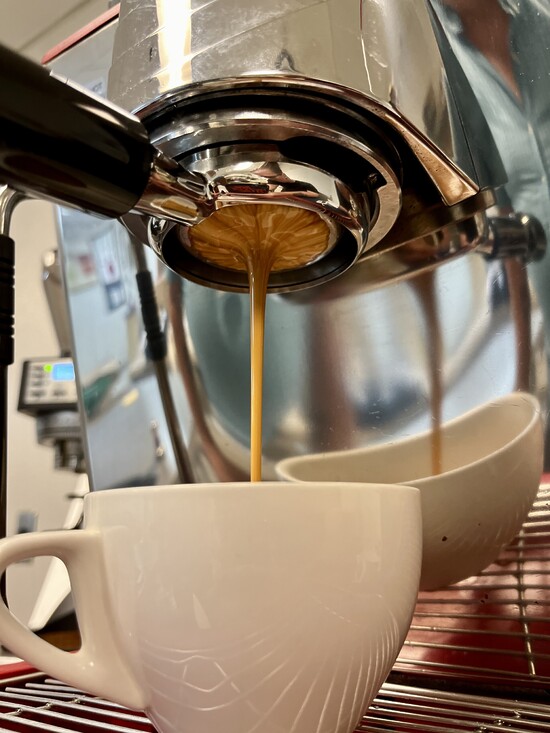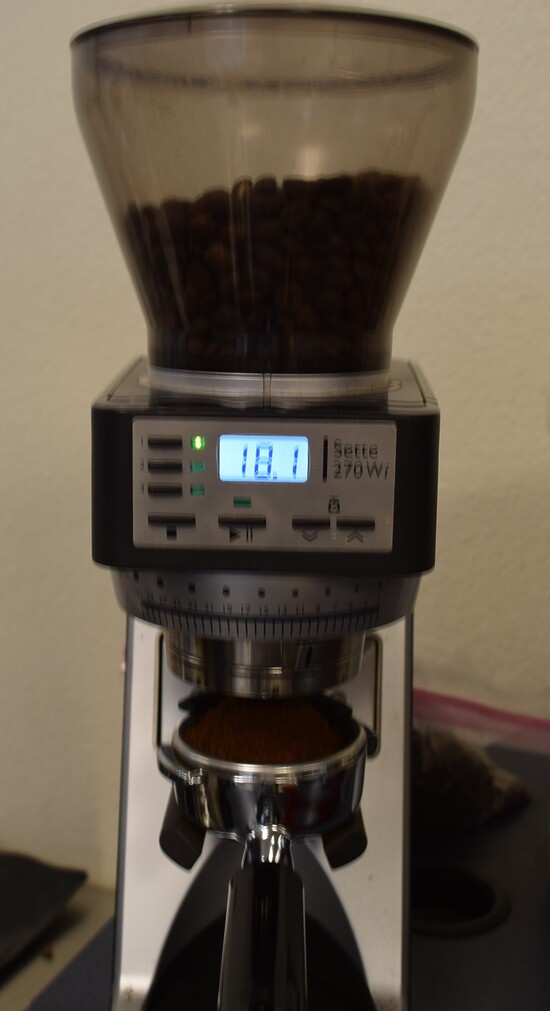Let’s start with a quick definition of espresso. Espresso is a small, dense coffee beverage that is made by forcing hot water (195° F to 205°F) through finely ground coffee at approximately 130 PSI.
 So, what is this elusive beverage? Precisely what this definition says, yet there is so much more to it.
So, what is this elusive beverage? Precisely what this definition says, yet there is so much more to it.
Espresso is a sweet, aromatic beverage that shows off the flavors contained within the dry grounds. It provides a lift, a social experience, or a conversation piece. A well-prepared espresso tells a story about the journey of the coffee from the farm to the roaster to the barista to your cup in one sensational, mouthwatering moment.
In this three-part series, I will offer guidance on preparing excellent espresso and discuss how to enjoy this magical elixir. My first thought is that espresso is not for everyone. I won’t try to convince you otherwise if it’s not for you. Just because I think it is the nectar of gods doesn’t mean everyone will. Remember, your taste preferences are your own, nobody can change that. Do coffee the way you enjoy coffee.
Get Started
Let’s build the foundation for your espresso.
Things you will need:
- An espresso machine capable of 130 PSI of pressure and 195°-205° F temperature.
- A burr grinder that will grind very fine.
- A tamper that fits your machine.
- A digital gram scale.
- Great Coffee!!!
That’s all that’s necessary. The other items you can use will only make things easier, not necessarily improve the espresso.
The flavor and body will depend on many factors, some of which have been discussed. This includes coffee roast level, coffees used in a blend, single-origin coffee, or brew time, to name just a few.
An espresso shot should be balanced, smooth, sweet, intense, and flavorful. Each coffee extracted as espresso will be different from any other. Blends designed for use on the espresso machine (usually labeled “espresso blends” or have espresso in their name) are the creation of the roaster which are intended to create a specific profile according to the roaster’s philosophy and artistic expression.
You might prefer a different profile, and that’s great, drink it how you enjoy it. But when you buy espresso blends it is a good idea to start with the roaster’s recommendation for the profile. Then you can adjust and play from there.
For instance, I set all my commercial clients to the same standard of a 2:1 finished espresso-to-grounds ratio with 27 seconds extraction time (25-30 is the industry recommendation).
This is a great place to start your quest for your god shot.
Some of espresso’s finickiness comes into play because when you change one variable, you must adjust every other variable. For instance, changing the grind size requires adjusting your dose (the amount of grounds you use). A larger grind size will allow more coffee through at the same time. Conversely, a smaller grind will produce a smaller portion of ground coffee at the same time. (This is, of course, unless your grinder doses by weight rather than time.)
All these options will be different, and one may fit your tastes more than another. This is where experimenting until you find your perfect fit is necessary (and fun!).
Perhaps by now, you’ve noticed that I haven’t mentioned anything like cappuccinos or lattes. This is because properly extracted espresso is foundational to these other beverages.
One of the joys of our situation in the shop is trying several different coffees prepared as an espresso. Not only do we regularly sample our five made-for-espresso blends, but we also get to try all the coffees we roast on the espresso machine. Many of these don’t work for our tastes, while others are simply marvelous.
Citing sources for all the information in this blog isn’t possible as I have picked up a lot of it through conversations with baristas, working with espresso, and job training for much of the foundational information. Mostly, I have played with espresso machines, grinders, and blends and have discovered what works best.
However, one great source is David Schomer’s “Espresso Coffee” for very detailed information.
